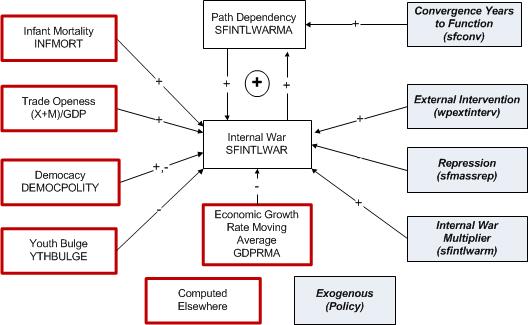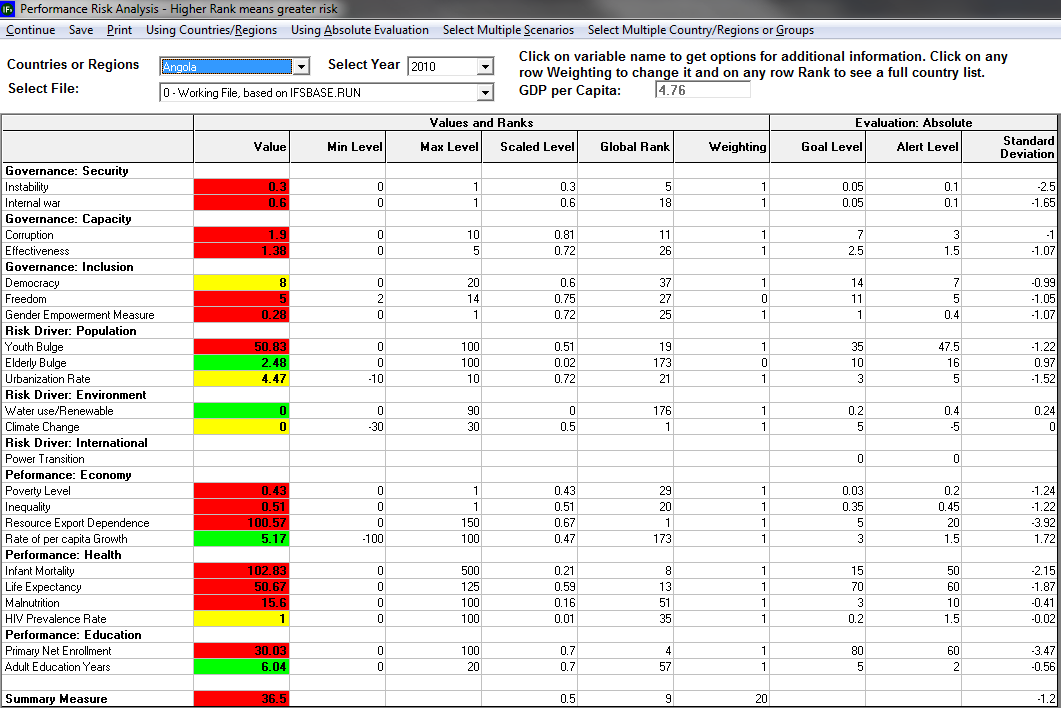International Futures Help System
Security
Internal War
Internal or intrastate war (SFINTLWAR) is heavily determined by a moving average of a society's past experience with such conflict (SFINTLWARMA) in what is a positive feedback system. The probability of such conflict will, however, typically converge to that determined by more basic underlying drivers, and the user can control the speed of such convergence by specifying the years to convergence ( sfconv ).

The major driving variables in a statistical estimation are the level of infant mortality (INFMORT) as a proxy for quality of government performance and trade openness or exports (X) plus imports (M) as a share of GDP. In addition democracy level (DEMOCPOLITY) enters in a non-linear and algorithmic fashion, as do youth bulge (YTHBULGE) and a moving average of economic growth rate (GDPRMA).
Although less often used and turned off in the Base Case scenario, external interventions ( wpextinterv ) and mass repression ( sfmassrep ) can cause or at least temporarily dampen internal war, respectively.
Finally, the user can multiply resultant endogenous values of internal war ( sfintlwarm ) in order to generate user-controlled scenarios.
The IFs system also includes a representation of instability short of internal war (SFINSTABALL and SFINSTABMAG), linking them to the category of abrupt regime change in the classification developed by Ted Robert Gurr and used by the Political Instability Task Force. The forecasting representation was developed before the revision and update of that for internal war, however, and we recommend less attention to it until its own revision is done.
Vulnerability and Risk of Conflict
The IFs treatment of societal/governance performance risk and related vulnerability to conflict does not involve an estimated formulation. Instead, like other such efforts, it involves the creation of an index. The figure below, a screen capture of the form (reached via Specialized Displays) uses variables related both directly to governance and to performance. A specialized Help topic on this form is available.
Although many users will be interested in the rankings of countries (see the Global Rank column for ranks on individual variables and the summary measure for overall, variable-weighted rank), others will be interested in the summary value across all variables, shown at the bottom of the first column. Those values are also available in the model as the variable named government risk (GOVRISK).

 International Futures at the Pardee Center
International Futures at the Pardee Center